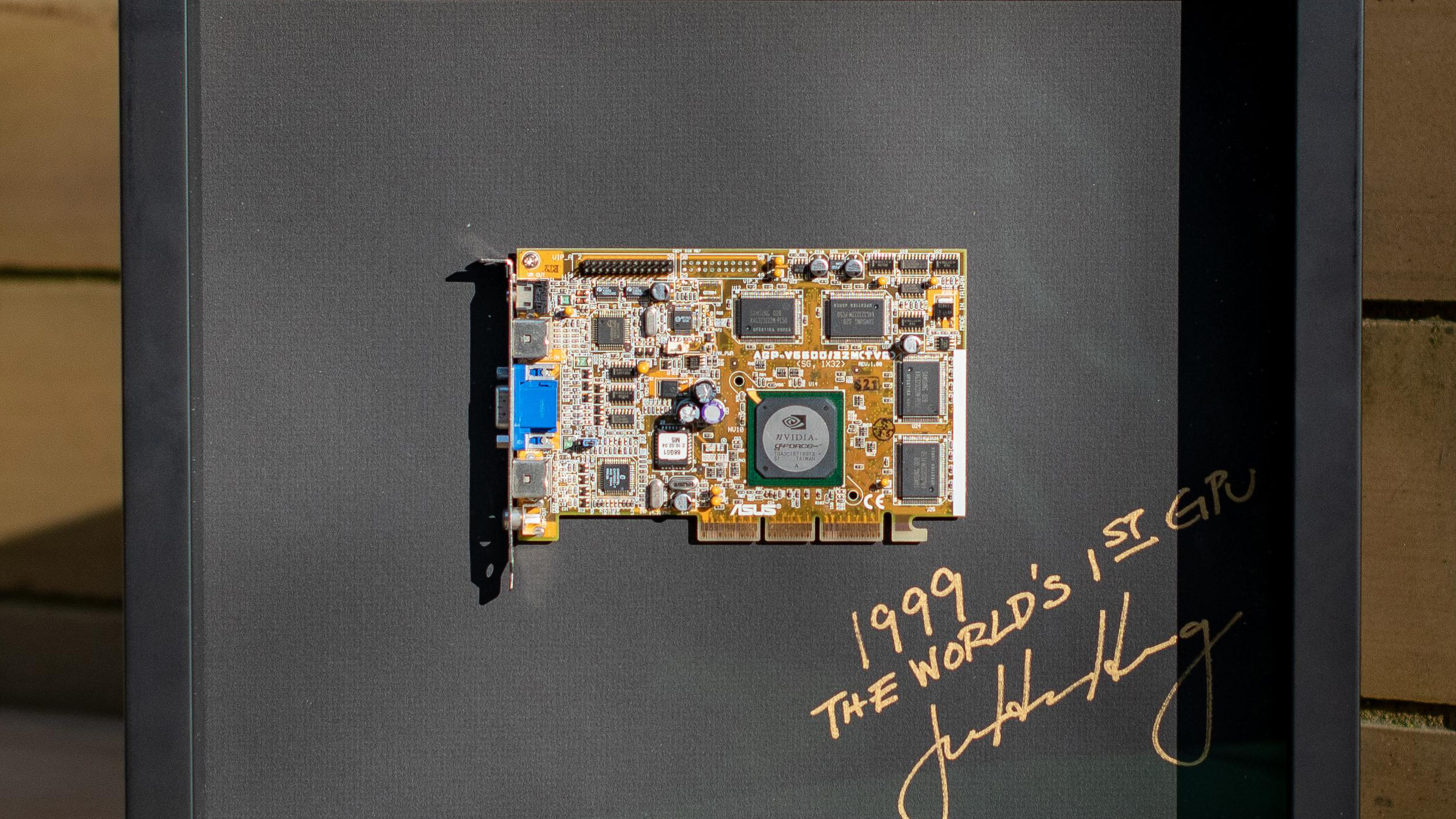
Ahead of CES 2025, Nvidia is giving away five classic GPUs signed by CEO Jensen Huang. The trillion-dollar GPU giant has posted the first two GPU giveaways on X, featuring the GeForce 256 and GeForce 8800 Ultra.
The giveaway is under the "GeforceGreats" hashtag that Nvidia has set up for all of its CES 2025-related content. Both GPUs have been installed in a black display box featuring Jensen's signature in gold handwriting at the bottom right. To win, comment on each X post.
Nvidia strategically chooses these two specific GPUs for its first and second (out of five) classic GPUs to giveaway. The GeForce 256 was Nvidia's first-ever GeForce GPU and the first-ever video card to be sold with the GPU moniker (video cards previously were dubbed "3D" cards). The GeForce 8800 Ultra was the first CUDA GPU to be introduced worldwide. This technology would become one of Nvidia's most valuable and popular technologies the company ever created, shaping the way GPUs are used even today.
5 days to CES.5 classic cards up for grabs.ALL signed by NVIDIA CEO Jensen Huang 👀Up first: GeForce 256, the world's 1st GPUWant it? Comment #GeForceGreats for a chance to win... pic.twitter.com/Hu0z0nAIlvJanuary 1, 2025
The Geforce 256 was released in 1999, at the height of the dot-com boom and the beginning of modern 3D graphics rendering functionality in computers. The GPU was equipped with a whopping four (yes, just four) pixel shaders, four TMUs, and four ROPs. It had 32MB of memory and operated on a 64-bit memory bus with 1.144 GB/s of memory bandwidth. The GPU had one VGA output and supported DirectX 7.0 and OpenGL 1.2.
The GeForce 256 represented a mindset shift in how video cards were perceived. Previously, all video cards were dubbed "3D" cards because they were designed specifically for 3D rendering and were often less complex than CPUs. However, the GeForce 256 was a different beast because it had 23 million transistors in the same range as the best CPUs during that time, such as AMD's Athlon chips and Intel's Pentium III CPUs. Several years later, this would be a precursor to CUDA when GPUs started to compete directly with CPUs, performing the same calculations as CPUs.
The GeForce 256's huge transistor count at the time would be complemented by support from new graphics technology. One of these technologies was support for the new Transform and Lighting Engine at the time. This technology enabled the GeForce 256 to convert a 3D scene with all of its objects from "world space" into "screen space," essentially converting assets from the 3D engine into a viewable image on the screen.
4 days to CES.Win this GeForce 8800 Ultra - the 1st CUDA GPUSigned by NVIDIA CEO Jensen Huang 🖋️Comment #GeForceGreats for a chance to WIN! pic.twitter.com/xKNXmq5NmQJanuary 2, 2025
Before the 256's arrival, this workload was very demanding on the CPU. "3D" video cards often wait for the CPU to finish this task. With this functionality baked into the GeForce 256, the GPU could perform this task by improving performance and enabling developers to push the envelope of 3D rendering further than ever before.
The GeForce 8800 Ultra, launched in 2007, features 128 shader cores, 32 TMUs, 24 ROPs, 16 SMs, 96 KB of L2 cache, a core clock of 612 MHz, a shader clock of 1,512 MHz, and a 384-bit memory bus with 768 MB of GDDR3 memory and 104 GB/s of memory bandwidth. It was the flagship GPU to run on the G80 Tesla GPU die, the first core and first GPU architecture to support CUDA, and it supported DirectX 11.1 and the Shader Model 4.0 standard.
CUDA is one of the most important technologies Nvidia has ever produced. This key technology changed how GPUs could be used forever by enabling them to run general-purpose calculations, which the same CPUs can run. First-generation CUDA supported C code and required a dedicated CUDA driver to function.
CUDA has become the predominant method of performing general-purpose computing tasks that greatly benefit from parallelization in enterprise applications. CUDA started the general-purpose GPU era, where GPUs were no longer used purely for graphics acceleration but as general multi-purpose processing units.







